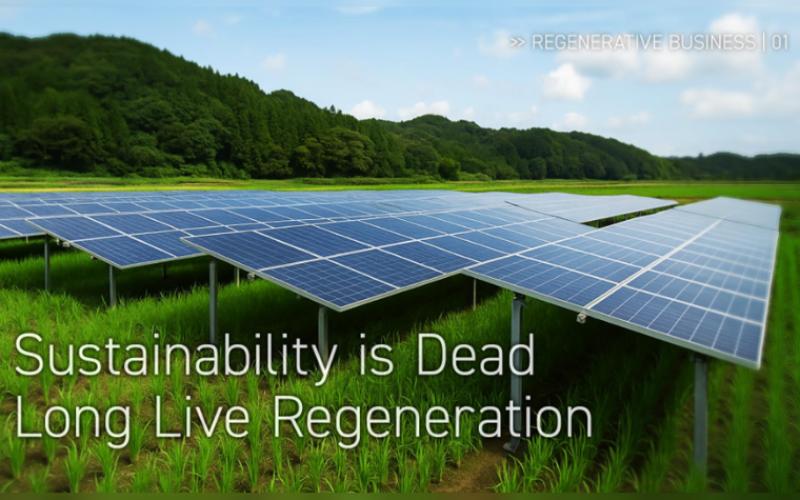Featured Article: Sustainability is Dead — Long Live Regeneration (imageMILL)
Regenerative Business marks a shift in mindset—from merely avoiding harm to proactively making things better. As the old French proclamation went, “The king is dead, long live the king,” declaring both an ending and a beginning, so too must sustainability give way to regeneration.
For decades, “sustainability” meant reducing harm—doing less bad. But today’s pioneering businesses know that’s no longer enough in the face of climate breakdown and biodiversity collapse. The new call is regeneration: businesses that restore, repair, and create positive impact. It’s about changing the mindset from doing less bad, to doing more good.
________________________________________
Why Sustainability Isn’t Enough
“Sustainability” once signaled responsible business—minimizing harm, reducing waste, optimizing efficiency. But today, maintaining the status quo means perpetuating decline. Climate breakdown, biodiversity loss, and social inequality demand more than steady—they demand reversal. Businesses must become agents of renewal, not just conservation.
________________________________________
Patagonia: From Less Harm to Planet-Saving Action
Patagonia famously reimagined its mission. Where once it promised to “build the best product, cause no unnecessary harm, and use business to inspire solutions to the environmental crisis,” it now declares: “We’re in business to save our home planet.”
This shift is visible across Patagonia Provisions, which champions Regenerative Organic Agriculture (ROC)—practices that heal soil, rebuild ecosystems, and sequester carbon.
Local highlights:
● Regenerative Sake with Terada Honke: brewed with organic rice at a 17th-century Chiba brewery, linking ecological restoration and cultural heritage.
● Regenerative Miso: made from no-till organic soybeans grown under solar panels that also power Patagonia stores. Aged 10 months with homegrown koji, it preserves nutrients while aiming for Regenerative Organic Certification.
These Japan-specific examples show that regeneration isn’t abstract—it thrives through heritage partnerships and local crafts. As Vincent Stanley, Patagonia’s Director of Philosophy, puts it: “If you want to be sustainable, basically, you have to be regenerative.”
________________________________________
Lush: Leaving the World “Lusher”
Lush Cosmetics also embraces regeneration. Its Spring Prize celebrates grassroots projects—58 were shortlisted in 2025. Lush also supports women in regenerative agriculture, embedding ecosystem and community resilience into its supply chain. Its pledge is clear: “Leave the world Lusher than we found it.”
________________________________________
Why This Matters for IJCC Members
Japan’s satoyama landscapes and Ireland’s rewilding and community renewables show regeneration is deeply rooted in both cultures. By embracing it, IJCC members can connect heritage with innovation and shape business as a force for renewal.
________________________________________
First Steps Toward Regenerative Business
1. Reconnect mission and impact: Ask, “Does our business leave the world better than we found it?”
2. Pilot small, think big: source regeneratively, support ecosystems and communities, and launch “net-positive” initiatives.
3. Brainstorm regenerative extensions: create products, services, or partnerships that give back—such as circular lines or community training programs.
4. Tell your story: share the regenerative journey with staff, partners, and customers. At imageMILL, we call this branded journalism.
________________________________________
Sustainability was the starting point—but the future is regeneration. Over the coming months, this column will explore practical pathways, inspiring stories, and cultural wisdom to help IJCC members build businesses that heal, revive, and redefine success.
________________________________________
Rick Grehan is an IJCC Board Member and Sustainability Committee Manager. As founder of imageMILL, a B-Corp regenerative branding agency based in Tokyo, he works at the intersection of creativity, sustainability, and social impact.

